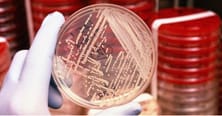Sorting Ten Billion Bacterial Cells in 30 Minutes

A high-throughput method developed by a mechanical engineer has proven to be capable of sorting through 10 billion bacterial cells in 30 minutes.
The immense improvement over the previous flow based single-cell sorting relies on differentiating cells by their characteristic surface free energies. Unlike Single-cell based sorting in flow cytometric and microfluidic cell sorters which rely on physical property of the cell like shape or fluorescence.
Novel Cell Surface Free Energy Technique
The method discovered by Yi Zou of Hawaii Manoa College’s mechanical engineering department. The method of identifying surface free energies without using contact angle measurements and theoretical interpretations was recently identified. This novel technique helped develop the new sorting technique, which has no theoretical limit, and can also be used to sort cells in a huge batch of culture.
According to Zou, this method can effectively separate 10 billion bacterial cells with no theoretical upper limit. The paper’s abstract states that “Individual bacterial species can be sorted with up to 96% efficiency, and the cell viability ratio can be as high as 99%”. They researchers also were successful in enriching cell populations as low as 1% in mixtures to a purity of 99%.
Source Paper: Surface Free Energy Activated High-Throughput Cell Sorting

